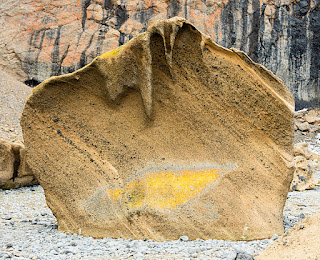Faulty Ice Core Ages and Tephra
As several linked articles on this site alone have revealed, secular scientists put the spurs to the narrative and make unwarranted assumptions. In this example, a key role is played by tephra —
"Is that the old video game with the colored blocks that drop down, Cowboy Bob?"
No, that's Tetris. This is about volcanic ash and debris called tephra. It can be found in ice cores.
Believers in deep time think that layers retrieved from ice cores are strong evidence for their views. However, they have dismissed facts based on their assumptions. (Interestingly, Bill Nye inadvertently supported creationists when he admitted that Greenland ice layers are not necessarily annual.) Layers of tephra were found in ice cores, but secular reckoning is ineffective when these are analyzed. Creation science and the Ice Age due to the Genesis Flood presents a far better explanation of the evidence.
"Is that the old video game with the colored blocks that drop down, Cowboy Bob?"
No, that's Tetris. This is about volcanic ash and debris called tephra. It can be found in ice cores.
 |
| Large tephra block in the Antarctic Credit: Wikimedia Commons / Andrew Shiva (CC by-SA 4.0) |
You can read the rest of the article by going to "Tephra and inflated ice core ages".Creation scientists have long argued that uniformitarians are assigning far too much time to the deep ice cores of Antarctica and Greenland. Since the ice sheets started forming during the post-Flood Ice Age, these ice sheets can be no more than 4,500 years old. And yet uniformitarian scientists routinely assign six-figure ages to those cores.Because of low snowfall, visible (and countable) layers are generally not preserved in the deep Antarctic cores. Hence uniformitarians rely on age-depth models which assume the heights of the ice sheets have been constant or nearly constant for vast ages. This assumption greatly simplifies the mathematics, but it is a source of error since it ignores the ice sheet’s time of formation.